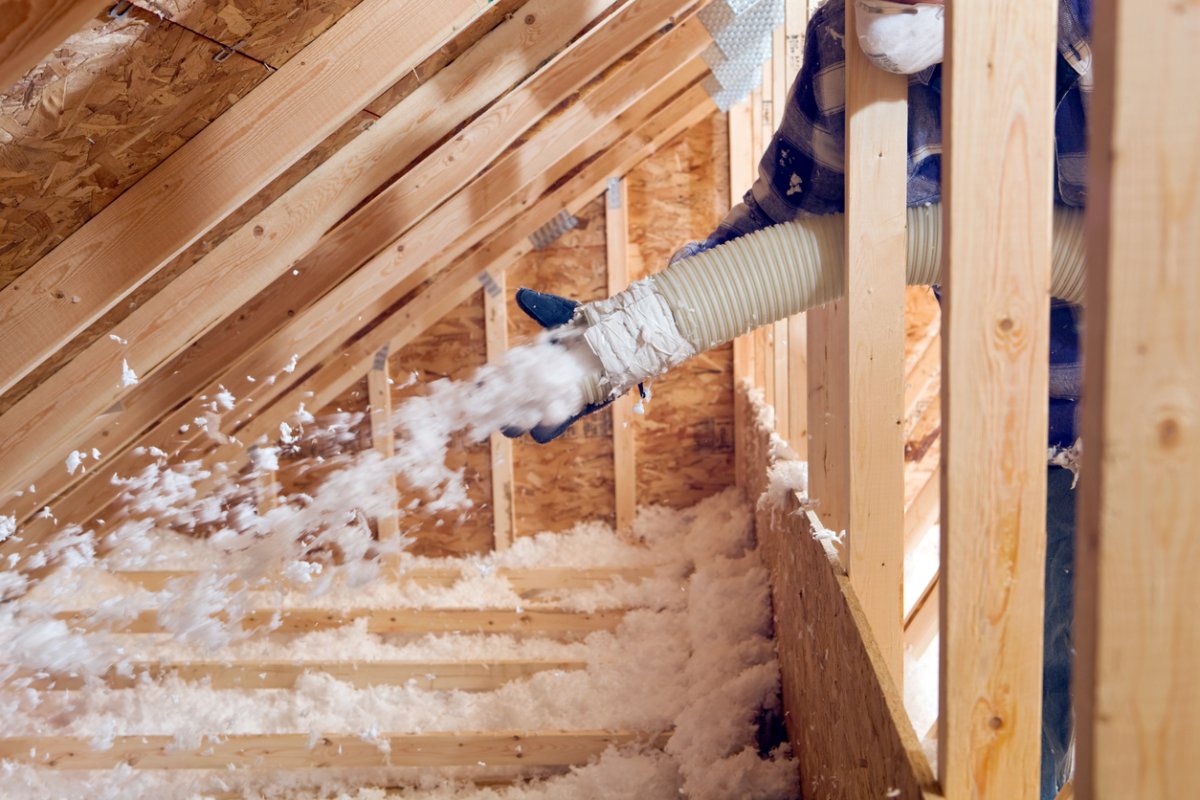We may earn revenue from the products available on this page and participate in affiliate programs. Learn More ›
Highlights
- The typical cost range to install spray foam insulation in a home is between $1,409 and $4,145, with a national average cost of $2,756.
- Some of the main factors affecting spray foam insulation cost include the size and accessibility of the area to be insulated, the type of spray foam insulation used, and the cost of labor.
- Installing spray foam insulation has numerous benefits, including lower utility costs, improved air sealing and moisture-blocking, better soundproofing, and resistance to mold and mildew.
- Since improperly installed spray foam insulation can cause swelling or sagging in the walls, it’s best for homeowners to leave this project in the hands of a professional.
Insulation is vital for helping keep a home’s interior cool in summer and warm in winter. Still, various insulation products come with different thermal reduction values (R-value), and insulation costs vary. Spray foam insulation is dense, and due to its expanding nature, it seals air gaps more thoroughly than other types of insulation, so it’s among the best options for insulating a home. However, it’s not the cheapest option available.
According to Angi and HomeAdvisor, spray foam insulation costs run between $1,409 and $4,145 to have it professionally installed, with a national average of $2,756. Unlike other types of insulation, such as blown-in cellulose fibers or fiberglass batts, installing spray foam insulation isn’t a DIY project. Instead, homeowners will want to hire one of the best insulation contractors, such as Dr. Energy Saver, for this project. Ahead, determine whether spray foam insulation is suitable for the home, and find out what factors will affect the overall cost.
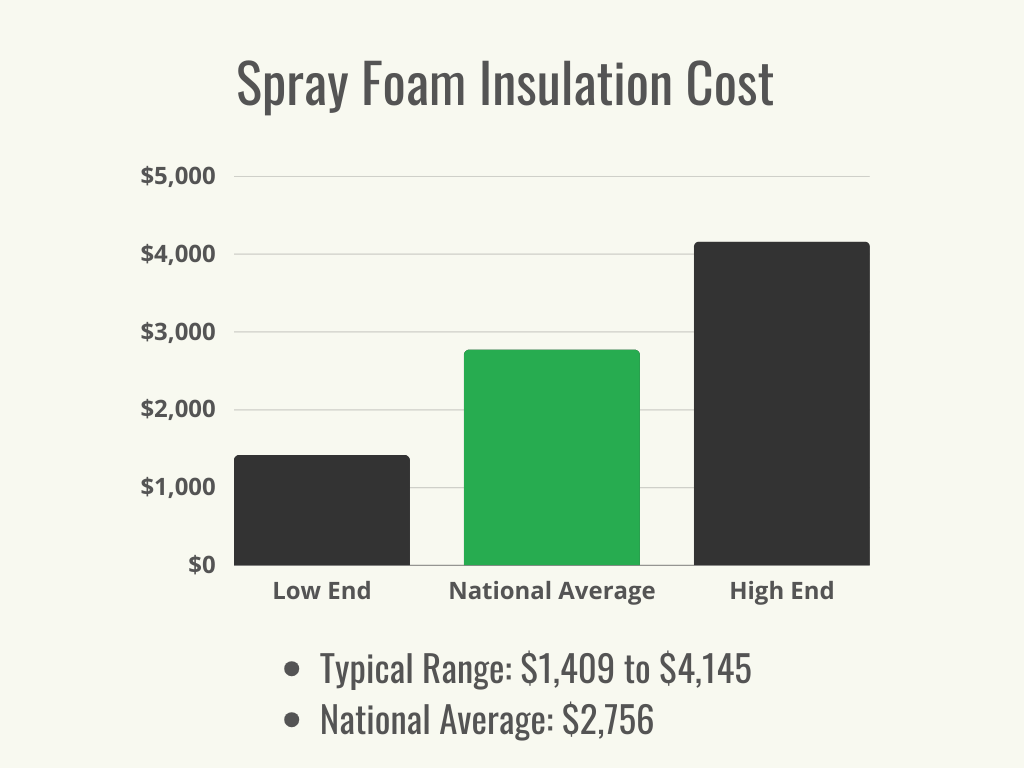
What is spray foam insulation and where can it be used?
Spray foam insulation is typically composed of a polyurethane-type liquid that, when combined with air, expands to fit in the interior of stud walls as well as rafter and joist spaces. This makes spray foam an excellent sealant because it fills even tiny gaps to reduce air leakage. Anyone who has ever lived with drafty windows knows how difficult it is to heat and cool a house efficiently. The drafts result in running up the energy bills while reducing comfort.
Several areas of the home can benefit from the use of spray foam insulation. Since it sprays on as a liquid and then expands to fill gaps, it creates an airtight seal that can eliminate most sources of drafts, and it also dampens sound transfer between rooms. Good spots for spray foam insulation include:
- Exterior stud walls
- Interior walls if sound-dampening is desired
- Roof rafters, in conjunction with a radiant barrier (if desired) for the greatest R-value
- Crawl spaces
- House penetrations, such as vent pipes, water spigots, and gas pipes
- Interior stud walls (for sound purposes)
Key Cost Factors
There are quite a few factors that can affect what a homeowner pays for spray foam insulation, including whether it is open-cell vs. closed-cell, material, thickness, labor, area size, and installation location.
Open-Cell vs. Closed-Cell
While the typical range in cost for having spray foam insulation professionally installed is $1,409 to $4,145, prices vary within that range based on the type of spray foam insulation.
- Open-cell: The cells in this type of spray foam do not form complete encapsulations, resulting in a softer and more flexible foam. Per 1-inch board foot, open-cell spray foam insulation averages $0.44 to $0.65 to have installed.
- Closed-cell: Like open-cell foam, closed-cell foam is also applied by combining a polyurethane liquid with air, which causes it to expand and seal spaces and gaps. Closed-cell insulating foam, true to its name, features completely encased air cells. This does two things: It makes closed-cell foam denser than open-cell foam, making it moisture-resistant. Homeowners can expect to pay an average of $1 to $1.50 per 1-inch board foot to have closed-cell spray foam installed.
Material and Thickness
While most spray foam insulation is made of polyurethane, material options also include soybean, vegetable oil, and water-based. Spray foam insulation cost per square foot can also range depending on how thickly the insulation is installed. In some areas 1 inch of insulation is sufficient, but some homes require up to 4 inches.
Labor
The cost of labor to have spray foam insulation installed is a sizable portion of the final tally. Most spray foam insulation pros have to be trained to install the specific brand of insulation, and they use a spray rig designated by the manufacturer. Spray foam insulation contractors charge about $1.50 to $4.90 per square foot for labor.
Area Size
The size of the area to be insulated plays a vital role in how much the project will cost. A small project with just 100 square feet of wall that needs insulating will run $44 to $150, on average, to have it insulated with spray foam. However, most projects are more extensive, and homes with 2,000 square feet of wall space would range from $880 to $3,000 to complete the project.
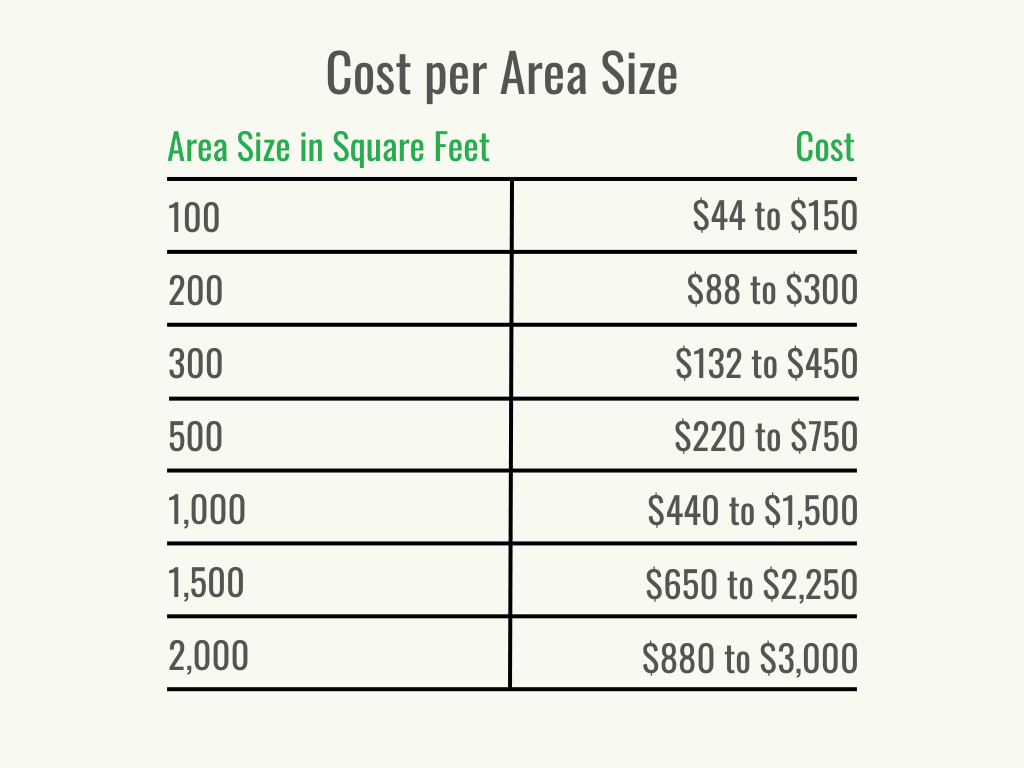
Installation Location
The cost to insulate an attic can differ from the cost to insulate basements, crawl spaces, and other parts of the home. This is because accessibility, square footage, and insulation requirements can vary by room. For example, the cost to insulate a garage is about $930 to $2,100. A larger detached building such as a barn can cost as much as $20,000 to insulate. Alternatively, spray foam attic insulation costs about $1,500 to $3,500.
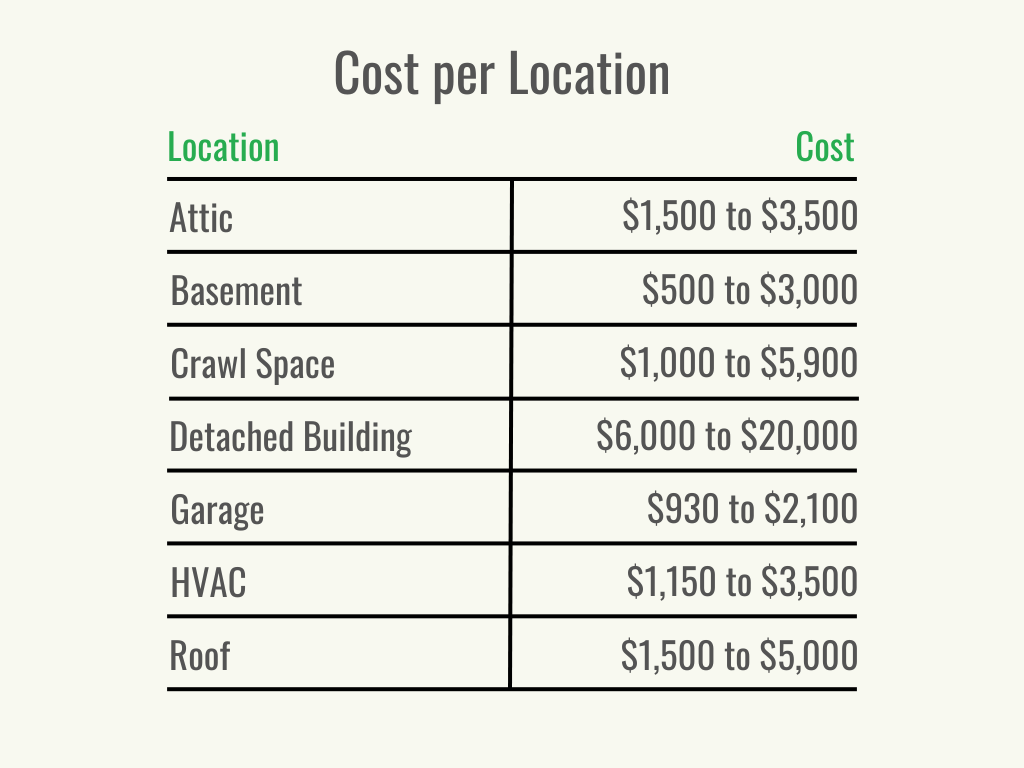
Additional Costs and Considerations
No two spray foam insulation projects are the same, so there may be costs that are not accounted for by a spray foam insulation cost calculator. Choosing the best attic insulation can help ensure the home is kept temperate and free from mold.
New Construction vs. Existing Home
The best time to install insulation of any type is during new-home construction when the wall spaces are open and insulation is easier to install. At this point, the labor costs to install spray foam insulation are going to be less because the spaces are easily accessible to the installer.
However, in an existing home, portions of drywall may need to be removed to access the stud spaces, and specific installers may decline to tackle the job if the spaces are not visible. Having to remove drywall to access the stud and rafter spaces will add about $293 to $875 to the cost of insulating.
Spray Foam vs. Other Insulation
In many cases, a home will need multiple kinds of insulation for different parts of the home. Spray foam insulation is handy for hard-to-reach parts of the house, but it’s typically used sparingly because it is relatively costly. To compare blown-in insulation vs. spray foam insulation, for example, a typical blown-in insulation project costs $1,636, and spray foam insulation costs $2,756 on average. Other types of insulation include fiberglass and Rockwool.
| Insulation Type | Average Cost |
| Blown-in | $1,636 |
| Fiberglass | $1,800 |
| Rockwool | $1,000 |
| Spray foam | $2,756 |
Existing Insulation Removal
If a home’s existing insulation has been damaged by mold or pests, it will need to be removed and disposed of before the new insulation can be installed. In most cases, this will cost between $1.50 and $3 per square foot if the contractor uses a machine. However, if the contractor needs to chip away the insulation by hand, costs may be closer to $5 per square foot. If the old insulation contains asbestos, it is especially important for homeowners to have a professional take care of the removal. Those who live in older homes will want to familiarize themselves with what asbestos insulation looks like in order to stay safe.
Mold Remediation
Moisture can damage some types of insulation, such as fiberglass batts that tend to compress when they get wet and lose their insulating value. Leaks inside wall cavities destroy fiberglass insulation, but they can lead to the growth of mold, which will need to be removed before the wall space is insulated again.
Mold remediation costs an average of $1,125 to $3,345, depending on the size of the area being treated and the going rate of labor in the community.
Vapor Barrier Installation
Some local building codes require installing a vapor barrier in exterior walls to keep moisture from passing through. If so, closed-cell spray foam insulation is suitable for use as a vapor barrier. However, open-cell insulation is not an acceptable vapor barrier, so if the homeowner wants open-cell insulation, but a vapor barrier is required by code, an additional vapor barrier will be necessary and could run an average of $0.65 to $1 per square foot.
Types of Spray Foam Insulation
While the traditional and most common types of spray foam insulation are polyurethane-based, other types are available, and some are more eco-friendly. Choosing an alternative kind of spray foam is unlikely to affect the cost of installation, however, as most of the price variation when it comes to installing spray foam is dependent on the thickness of the product and the going cost of labor in different communities.
| Spray Foam Insulation Type | Cost per Board Foot |
| Polyurethane | $0.44 to $1.50 |
| Soybean | $1.50 to $3 |
| Vegetable oil | $1.50 to $3 |
| Water-based | $0.50 to $2.50 |
Polyurethane
Most spray foam insulation on the market today is made from polyurethane, which offers good insulating value, but tends to off-gas for a few years. Off-gassing is the releasing of volatile organic compounds (VOCs) that may cause a noticeable chemical odor. Off-gassing is strongest in the first year after installation and should end entirely in 4 to 5 years. Homeowners can expect to pay $0.44 to $1.50 per board foot for professional installation of polyurethane foam insulation.
Soybean
Soybeans are grown for various food and non-food sources, and one of those uses is as a component of spray foam insulation. Soybean-based foam contains few or no VOCs, so there’s no objectionable chemical smell that some home residents may find troublesome.
Because soybeans can be planted and harvested on an ongoing basis, those looking for an eco-friendly alternative to polyurethane-based insulation may want to request a soybean-based product. In general, soybean spray foam insulation costs about $1.50 to $3 per board foot.
Vegetable Oil
While some types of spray foam insulation are advertised as being made from vegetable oil, virtually all are still made from soybean oil, which has unique components that make it suitable for creating a long-lasting insulating product. The cost will be competitive with other types of foam, but soy- and vegetable-based foams may not be available in all locations. Vegetable oil spray foam insulation costs $1.50 to $3 per board foot.
Water-Based
Water-based spray foam may also be an option for those looking for an alternative to polyurethane-based foam. Having it installed will cost approximately the same, ranging from $0.50 to $2.50 per square board, depending on whether it’s open-cell or closed-cell insulation. The size of the project, as well as the going rate for labor, is also a consideration.
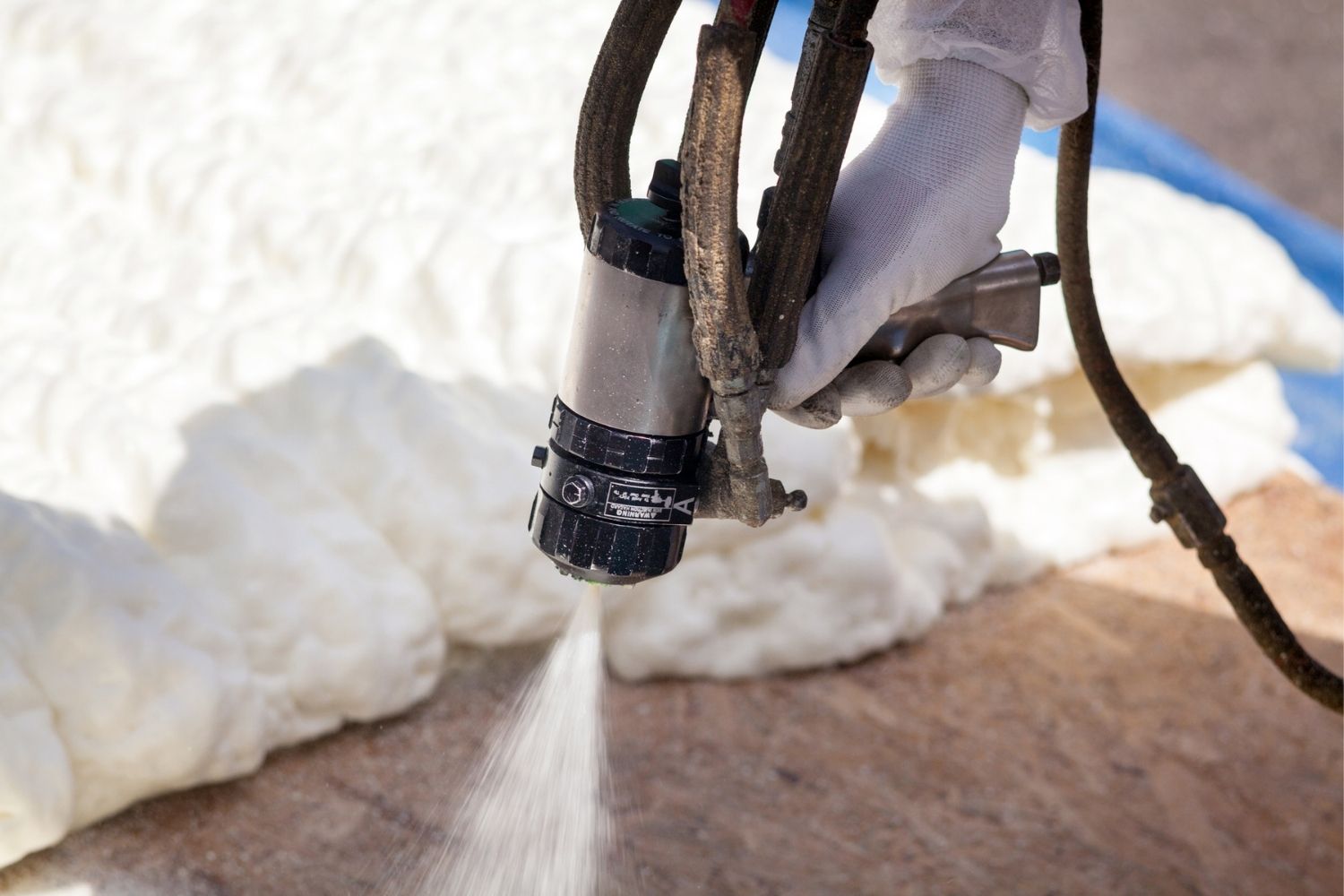
Benefits of Choosing Spray Foam Insulation
Insulating a home helps conserve energy and helps maintain a comfortable indoor climate for residents. While a variety of insulation types are available, because spray foam also acts as a sealant, it’s up to 50 percent more efficient than some other types, such as fiberglass batts or cellulose fibers. For this reason, many homeowners find that spray foam insulation is worth it despite its relatively high cost.
Lower Utility Costs
Drafty windows and other sources of air leaking in and out of a home can account for as much as 40 percent of a home’s energy cost. While all insulation will help increase a home’s thermal resistance, spray foam is the only type that will seal air leaks, resulting in lower utility costs. The initial cost of installing spray foam insulation is higher than installing batts, but if a homeowner lives in an area where heating and cooling costs are high, it could pay for itself in a few short years.
Air Sealing and Moisture-Blocking
Moisture and construction materials don’t mix—water that leaks through siding can damage a home’s wooden structure. Closed-cell spray foam insulation, which runs an average of $1 to $1.50 per board foot, is an effective sealant to keep out air, but it serves an extra purpose that open-cell foam does not. Closed-cell foam acts as a moisture barrier to help keep water away from building materials.
Soundproofing
Spray foam insulation forms a dense layer between wall studs, giving it excellent soundproofing ability. Both closed- and open-cell spray foam insulation can be installed in wall cavities to reduce sound transfer. This can be beneficial when installed in exterior walls to help block the sound of a busy street and in common walls between separate living spaces in duplexes and apartment complexes.
High R-Value
The denseness and sealant qualities of spray foam insulation give it more thermal resistance than other types of insulation. R-value is measured by the material’s ability to reduce hot and cold thermal transfer by 1-inch thickness. Closed-cell foam insulation offers the highest R-value, and therefore the best insulating properties.
- Closed-cell spray foam: Up to R-7 per inch
- Open-cell spray foam: Up to R-3.5 per inch
- Blown-in fibers: Between R-3.1 and R-3.7, depending on fiber type
- Fiberglass batts: Up to R-3.8
- Rockwool: Up to R-3.3
Long-Lasting
While homeowners will pay more for spray foam insulation over other standard types, the product not only seals out air better, but it also comes with a longer useful life—up to 80 years, which is up to three times longer than other types. For those comparing spray foam insulation vs. fiberglass insulation costs, spray foam is admittedly costlier. However, considering that fiberglass batts and cellulose fibers will lose their loft when wet, which reduces their R-values, spray foam insulation holds its value longer and may be a better investment.
Mold- and Mildew-Resistant
Spray foam insulation does not absorb moisture, making mold and mildew less likely to grow. Areas that are traditionally damp, such as basements and crawl spaces, can benefit from spray foam insulation. Insulating the interior walls of a typical basement runs about $500 to $3,000, and insulating a standard crawl space could cost about $1,000 to $5,900.
Wall Reinforcement
While it’s not possible to construct a wall with spray foam insulation, the densest type of foam, closed-cell, can help give a wall increased racking strength, meaning the wall is less likely to shift out of alignment. By adhering to the inner surfaces of the studs and then curing to a hardened material, it offers added shear strength to a wall. This makes it well suited for bolstering metal buildings while providing thermal resistance at the same time.
Tax Credits
Improving a home to increase its energy efficiency may come with a rebate or tax credit. It’s a good idea for homeowners to check with their local building authority to see if any rebate programs might apply. In addition, in some cases, if homeowners update to improve energy efficiency, they may be able to claim an insulation tax credit on their annual income tax return.
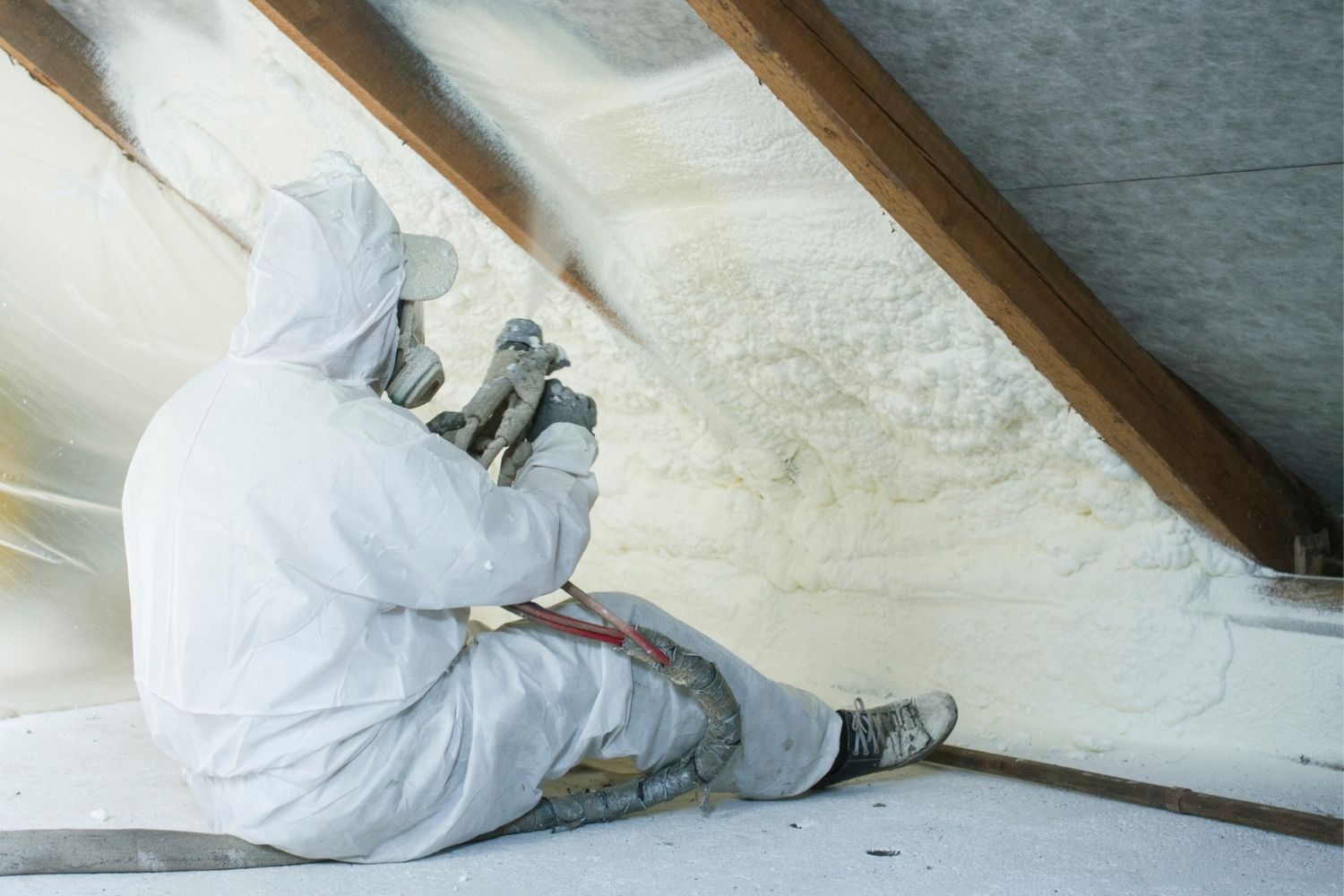
DIY vs. Hiring a Professional
DIY spray foam insulation costs less than hiring a pro, but there are many benefits to hiring for this project. Some insulation manufacturers will only sell their product to trained and certified technicians, so there’s no way for a DIYer to purchase it.
Spray foam insulation is available in a kit, but the verdict is still out on whether these types of kits are a good option. Installing spray foam insulation can be a tricky process because it has to be applied in thin layers. If too much is applied at once, it can sag or swell beyond the surface of the wall studs. In this case, the excess must be cut away later.
Correctly installing spray foam insulation requires a skilled touch, and the product’s manufacturer will not likely warranty the installation if it’s not applied by one of their approved technicians. If homeowners are not sure who installs spray foam insulation, they may want to start by researching the best spray foam insulation contractors in their area.
How to Save Money
Installing spray foam insulation in new construction will cost less than installing it in an existing home because it can be sprayed in the wall and rafter spaces while they’re open. In a remodeling project, the installer may need to remove some wallboard or drill holes and use an injection method of installing the foam. Homeowners may be able to save a bit using the following tips.
- Look into incentives and rebates. Homeowners can find out if their community or state offers rebates or incentives for improving energy efficiency.
- Opt for open-cell insulation. Closed-cell insulation runs $1 to $1.50 per board foot, while open-cell costs about $0.44 to $0.65 per board foot.
- Install during the initial construction. Before the interior drywall is on, spray foam insulation is the least expensive because less labor is necessary.
- Incorporate other insulation types. Spray foam insulation can be costly compared to other materials, so it’s worth switching to batting or blown-in insulation for larger spaces.
- Try a partial DIY. For those who are comfortable learning to install spray foam insulation, doing some of the smaller parts of the project themselves may help save on labor costs.
Questions to Ask a Pro
Most homeowners will pay from $1,409 to $4,145 to have a home insulated with spray foam. Much of that cost variation comes from the going cost of labor in a community and the difference in price between open-cell and closed-cell insulation. Those who have never undergone this project before may not be sure how to hire an insulation company; to ensure they hire the right pro for this project, homeowners will want to consider asking the spray foam insulation company a few questions.
- Are you insured, licensed, and bonded?
- How long have you been in business?
- Do you have any references?
- Will the work be subcontracted?
- Do you install both open-cell and closed-cell spray foam insulation?
- Is spray foam insulation the best material for my home?
- Will you remove the old insulation?
- How soon can you start?
- How long do you expect this project to take?
- What hours do you work? Will I need to be home?
- Are there any potential additional costs?
- How much insulation do you estimate my home will need?
- What R-value do I need?
- What parts of my home need insulation?
- Do you offer a whole-house discount?
- How long does spray foam insulation last?
- What are your financing options?
- What kind of warranty do you offer?
- Do you apply for rebates?
FAQs
With the skyrocketing cost of heating and cooling a house, homeowners are always looking for ways to conserve energy and save money. While the average cost of spray foam insulation is $2,756 nationally—much higher than other insulation materials—the extra expense can often be recouped in energy savings in a few years. For those considering spray foam insulation, a few questions are to be expected.
It’s probably not a good idea. Many manufacturers will sell their products only to trained and certified technicians, and using the product requires a good amount of skill.
The interior of a metal building will benefit from a 1-inch layer of closed-cell spray insulation foam, which will cost between $1,600 to $2,400 to have professionally installed.
Spray foam insulation R-value depends on whether it is open- or closed-cell. Closed-cell spray foam insulation has the highest thermal resistance value, averaging R-6 to R-7 per inch. Open-cell foam averages R-3.5 to R-3.6 per inch.
HomeAdvisor, Angi, HomeGuide, Fixr

